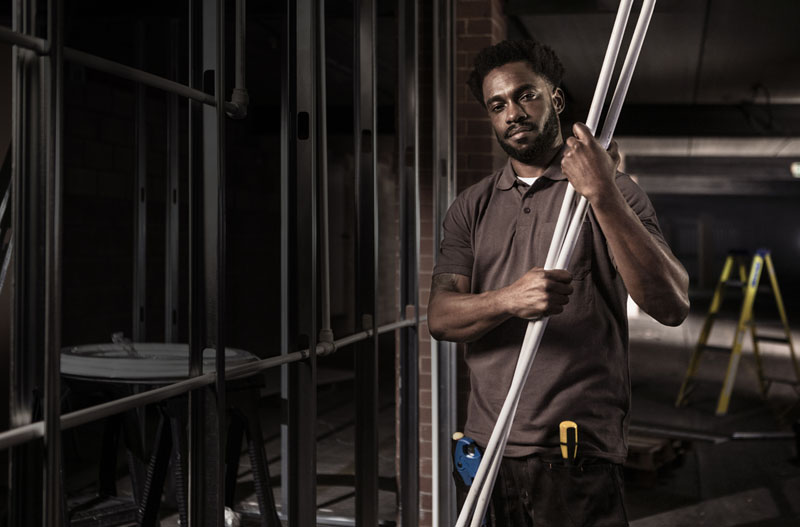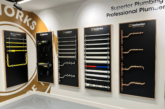
Pressure reducing valves (PRVs) are vital for delivering safe and stable water supplies. Richard Bateman, Product Marketing Manager at RWC, explains how these valves help conserve water and make plumbing systems safe and leak free.
Life has most definitely been turned upside down since the Coronavirus outbreak. Family gatherings are conducted on smartphones, working from home is the norm, and more and more of us are confining ourselves to our properties 24/7.
While we all get used to this ‘new normal’, there is something else that has been turned upside down — the amount of water being used while many more are at home. Our water systems are in high demand and this is leading to more fluctuations in the mains water pressure, creating more stress on pipes, valves and fittings.
These significant changes in pressure can lead to pipe bursts, flooded homes, and people being left without water. For manufacturers to merchants, we have a duty to help protect homes and people. With this in mind, such situations can easily be prevented by persuading installers and contractors to install an additional pressure reducing valve (PRV) for each home.
How do PRVs work?
A pressure reducing valve takes a high inlet pressure and reduces it to a lower outlet pressure. When it does this under both flow and no-flow conditions, the type of control is known as ‘drop tight’.
Reliance Valves’ PRVs use a balanced spring and diaphragm to control the downstream pressure. This ‘drop tight’ feature is one of the most important criteria for any PRV, as it stops the pressure from ‘creeping’ — a term which is used when an increase in the downstream pressure occurs under no flow conditions.
A valve that allows this ‘creep’ cannot be classified as ‘drop tight’, or in fact a true PRV, as it will eventually allow the downstream pressure to creep up to equal the upstream pressure. This can cause significant problems and essentially negate the point of using a PRV in the first place.
An additional safety net
For domestic properties, typically, water authorities will install their own PRVs in the road to regulate the water pressure for individual homes. This is because the mains water pressure in the UK can vary from 1bar to 20bar (or even higher in some low usage areas), so it needs to be lowered for safe consumption. Usually, the mains pressure coming into the home will be between 1bar and 3bar.
The water supply pressure will also tend to vary through the day. For instance, at high usage times (typically mornings and late afternoons), the pressure may drop by comparison to low water usage times (throughout the night), when it may increase dramatically.
On top of this is the changing situation with COVID-19, causing even bigger variations in water usage patterns. All of this could lead to significant and sudden changes in the water pressure that can blow fittings apart and cause pipe bursts, especially if the pressure reducing valves in the road fails for any reason.
To prevent these circumstances, it is highly recommended that every household has an additional PRV to protect against any failures in the water authority’s pipework. These valves should be fitted at the point where the mains pipework first enters the property, and usually, this is leads into the kitchen.
There are many PRVs on the market, but for domestic properties, a general rule of thumb is to size the valve to fit the water mains pipework entering the property. This should provide enough flow for all normal activities in a dwelling.
Merchants can help installers by offering best practice advice around the selection of right PRVs for a job, or put them in touch with manufacturers for guidance. Our technical support teams at RWC can assist plumbers with key considerations around the specification of these valves, as an undersized or oversized PRV can cause several issues down the line.
Other ways in which merchants can help is by stocking a good range of PRVs for customers. And one of the main criteria behind selection of a good PRV is how easy it is to install, commission and service. This will bring great benefits to your customers when they are trying to install these valves in tough conditions.
For domestic use, Reliance Valves’ 312 Compact Series PRV is the most suitable. Adjustable to pressures between 1.5bar – 6.0bar, the valve has a compact design that is quick and easy to install and test. WRAS approved, this valve features a single cartridge design for efficient servicing, and two test points on either side to test the downstream pressure. The valve offers installation flexibility too, as it can be fitted in any orientation to suit the space requirements.
Safety and efficiency
PRVs are paramount to keeping water supplies safe and stable. By stocking and selling these components, and advising installers to fit these valves at the water mains of each home, merchants can help protect homeowners from pipe bursts, flooding and costly remedial works.
An added benefit of these valves is that they also help conserve water — firstly by delivering water at optimum pressure, and secondly by preventing leaks that can result in water wastage.
For more about RWC and Reliance Valves, head to: www.rwc.co.uk









